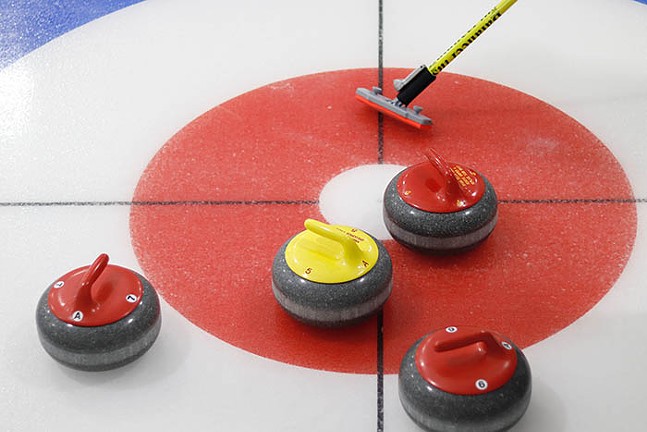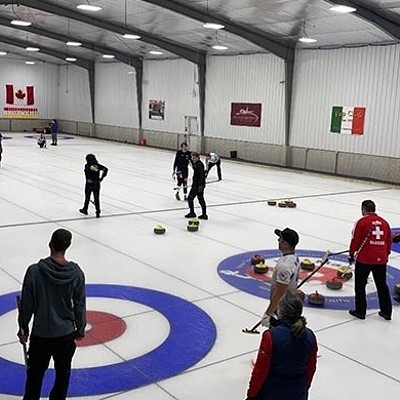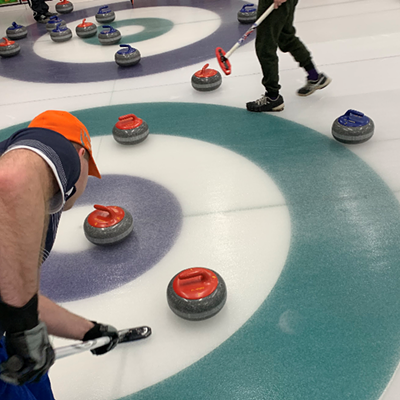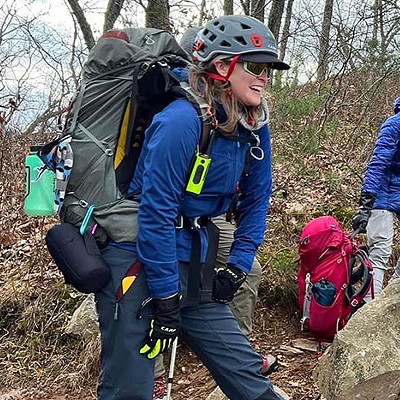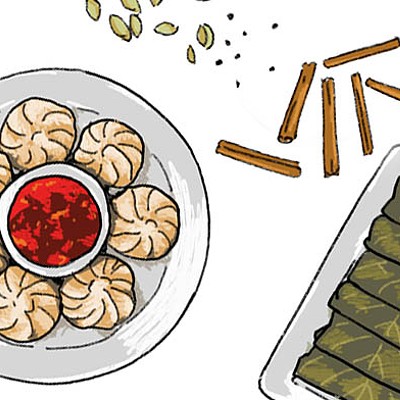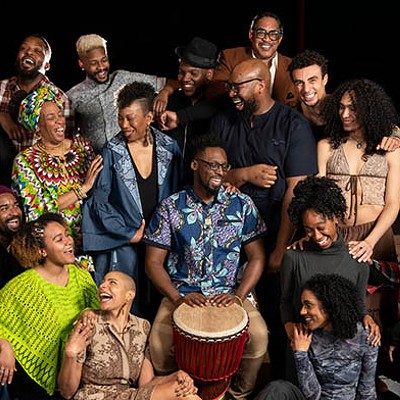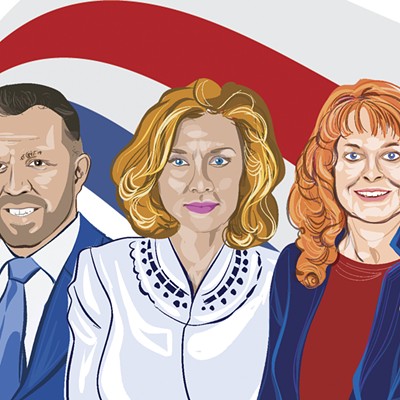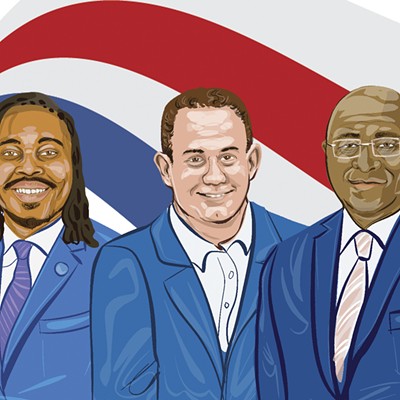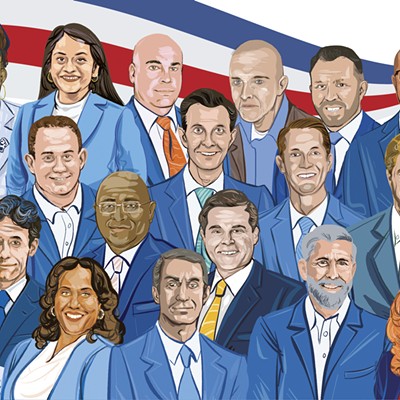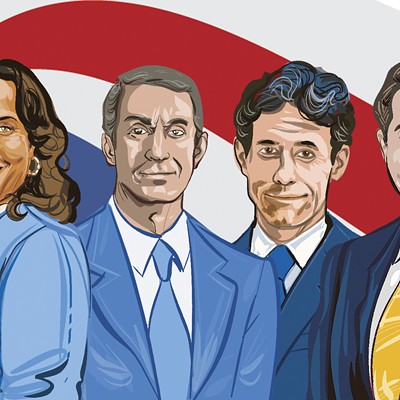
If playing hockey isn’t your thing, curling may be.
It takes a blend of finesse and gusto: Casual drinking is part of curling culture, but get drunk and you’ll get thrown off the ice. Communicating involves roaring at your teammates, but etiquette requires calling your own fouls. The primary tool is a 40-pound stone, but a hairline crack in the ice can ruin a game.
These dualities attract a lively blend of personalities, and, according to Dustin Devine, president of the Pittsburgh Curling Club, that’s the magic of it.
“We have members of the club ranging from their 20s into their late 60s and early 70s,” Devine tells Pittsburgh City Paper. “We have people that are athletic and then we have people that are not as athletic. We have members that use wheelchairs and they participate in curling, so it's a very inclusive game.”
Invented more than 400 years ago in Scotland and long popularized in Canada, curling has been played in the United States since the 1800s but never spread much beyond the upper Midwest until recent decades.
Pittsburgh has the 2002 Salt Lake City Olympic Games to thank for its stake in the leisurely winter pastime.
Once the games were over, several Pittsburghers, energized by seeing the sport on the screen, independently reached out to the United States Curling Association to inquire about a local chapter. There wasn’t one, they learned, but the Association brought them together to form their own.
Husband and wife Steve Buffington and Marie Rose were quickly recruited, having developed an interest in curing during a ski trip to Canada several years prior. Twenty years on, both remain active participants, on and off the ice.
“After we played a few tournaments, we were really interested,” Buffington tells City Paper. “We were hooked.”
Starting around 2002, Rose and Buffington, along with a few friends, helped build the club by renting ice time at the Robert Morris Island Sports Center. It has since grown into a nonprofit organization with 150 members.
Since 2020, the club has had its own building in Stowe Township that captures rainwater from the roof and sends it through a five-part filtration system ready to form pure ice.
It was the pursuit of perfect ice, more than anything else, that set the curlers in search of their own rink. Unlike hockey, curling must be played on a perfectly flat surface without the typical imperfections generated during a hockey game. But at the granular level, the ice is textured with delicate little indents that, paradoxically, generate traction for rubber souls while easing friction for granite curling stones. Without this “pebbling,” even pros can’t throw stones much beyond 50 feet.
“We considered lots of options,” Buffington says. “But the only way to get better quality ice is to build the ice rink, then you have control over it.”
It took nearly two decades to generate enough members and funds. Every four years the Winter Olympics introduced new Pittsburghers to the sport, boosting the club’s ranks.
Now, curlers can be found on the ice nearly all days of the week, with regular league games on Mondays and Wednesdays, practice on Thursdays, and a healthy rotation of weekend programming. Throughout the year, the Pittsburgh club also hosts national and regional events, from the Special Olympics to the Grand National Curling Club Senior Women’s Championship.
Beginners can get a feel for the sport during a “learn to curl” session, offered most weeks for $50, which includes the equipment rental.
“I'll have you playing a regular game of curling within two hours,” says Devine. “It's very easy to pick up.”
While the basics come quickly, seasoned players can always find new ways to improve their game. This is part of the appeal for Erin McManus, who joined the club after watching the 2010 Olympics in Vancouver.
“I’m a competitive person,” McManus tells CP. “[Curling] is about thinking ahead — I like the strategy.”
Anyone familiar with bocce or lawn bowls can grasp the fundamentals of curling by imagining the same concept translated onto ice.
Two teams of four compete over 10 “ends” (think innings). Each player has to slide two stones down 130 feet of ice into a 12-foot circular target. At the conclusion of each end, every stone within the rings counts for one point. The team with the most points at the end of the game wins.
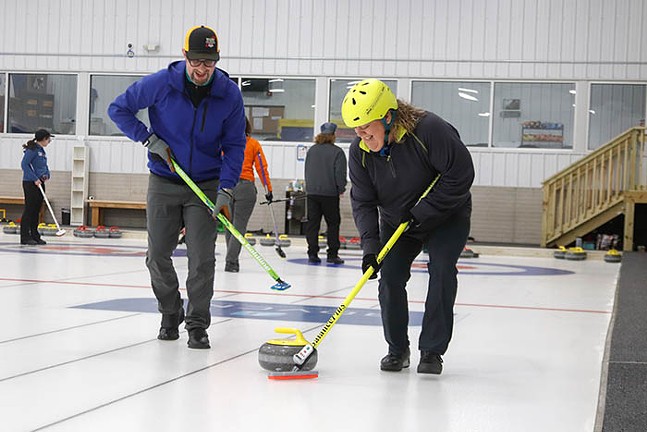
But curling is not so much about getting your stones in as keeping your opponents’ out. That’s where strategy comes in. Types of shots — aided by sweepers softening the ice with brooms — include “guards,” “draws,” and “take-outs,” as well as offshoots, such as the “peel,” the “hit-and-roll,” and the “come-around.”
All of this means seasoned players are thinking several steps ahead in anticipation of their opponents’ next moves.
“They call it chess on ice,” says Carson Turner, a club member since — you guessed it — the 2018 Olympics in Sochi, Russia.
What attracts people of all ages and abilities to curling is not just the sport, but equally the off-ice socializing that’s built into the culture.
The custom of wining, dining, and mingling at the end of a curling game is so much a part of the experience that it has its own term: broomstacking.
Whether playing at the elite level or in a beginners league, curlers are never just there for the exercise. Pittsburgh curlers say that’s a great reason why you should get involved.
“If you come by yourself to a curling club you’re going to meet people,” McManus says.
Pittsburgh Curling Club. 491 McCoy Road, McKees Rocks. pittsburghcurlingclub.com

